Exploring Sperlonga: Italy's Hidden Gem of Sun, Sea, and History
This is a coastal destination you will want to add to your Italy bucket list!
Two hours south of Rome and 2 hours north of Naples, lies the enchanting coastal village of Sperlonga. About 4000 people still reside in the town. This number doubles during the summer months. I visited Sperlonga in April 2024. Here are the things I enjoyed while there.
Grotto of Tiberius
The archaeological remains of the Villa of Tiberius, the Roman emperor who ruled from 17 to 42 CE, had long been speculated to lie somewhere between Rome and Naples. Finally uncovered in 1957, these ruins offer a glimpse into the significance of this once-thriving seaside town. According to legend, Sperlonga was a stop on Odysseus’s journey, and in the grotto near the villa, a series of ancient sculptures depicting scenes from the Odyssey were discovered.
The imperial residence originally spanned over 300 meters along the eastern beach and included, besides service quarters and living spaces, a Roman bath complex with water storage facilities and private moorings. The pond was fed by natural springs and saltwater from a nearby coastal lake, with a mechanism built to lift water from the lake into compartments where prized fish could breed.
Inside the cavern, exquisite marble statues, glass mosaics, and monumental sculptures depicting scenes from the Odyssey decorated the space. These works stand as some of the most remarkable evidence of the ancient world’s deep engagement with the myth of Odysseus in art.
Historical records place the villa's infamous tragedy in 26 CE, when a rockslide from the coastal cliffs struck the emperor’s dining party during a grand banquet. Though Tiberius survived, many guests perished, prompting the emperor to retreat to Capri indefinitely.
The damaged sculptures from that fateful evening were rediscovered in 1957 and are now displayed at the National Archaeological Museum in Sperlonga. Among them are the renowned marble sculptures depicting four pivotal scenes from Homer’s epic:
- Scylla’s assault on Odysseus’s ship
- The blinding of the cyclops Polyphemus
- The theft of the palladium
- Odysseus carrying the body of Achilles
Connections to Mythology
The area is steeped in mythology, particularly the legend of Amyclae, a city founded by Lacooni near the Cape. The Romans, who settled here at the end of the Republican period, were drawn to the region's natural beauty and mild climate, constructing impressive villas along the coast. The name "Sperlonga" is derived from the Latin word speluncae, meaning caves, referring to the numerous natural caves in the area. By the 6th century, the ruins of these Roman villas became a refuge for the local population, marking the origins of the first settlements in Sperlonga.
The locals sought safety here, escaping the dangers of marshland diseases and pirate raids. In 1534, the village was devastated by the forces of the notorious pirate Khair ad-Din, known as Redbeard.
Legend has it that Sperlonga was a key stop on Odysseus’s journey, and in the grotto near the villa, a collection of ancient sculptures depicting scenes from the Odyssey was discovered.
I highly recommend visiting the La Villa di Tiberio
e il Museo Archeologico di Sperlonga view these remarkable sculptures, which once adorned the grotto of the Roman Emperor Tiberius.
Museo Archeologico Nazionale e Villa di Tiberio
Via Flacca, km 16.300
04029 Sperlonga (Lt)
Tickets about €7
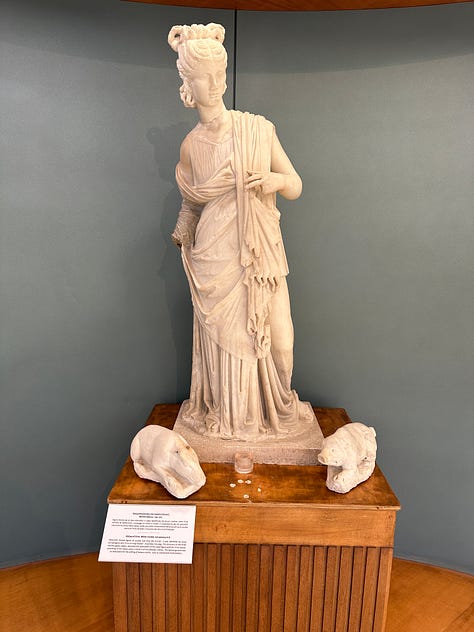

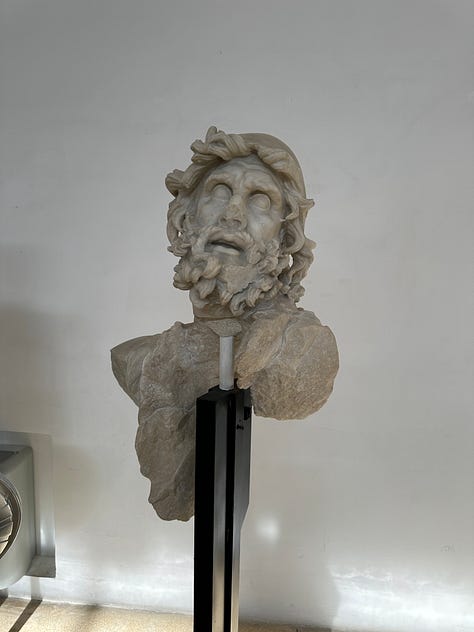
The Towers
A prominent landmark of Sperlonga, the Torre Truglia stands proudly on a rocky cliff just below the town center. This squat tower has been a persistent defender against pirate raids and Saracen attacks since its construction in 1532. The location offers breathtaking views of the coastline, with sandy beaches stretching in both directions, the town below, and the distant Monti Aurunci mountains.
From 1870 to 1969, the tower served as a station for the Guardia di Finanza (Italy’s finance police, responsible for combating smuggling and patrolling territorial waters). Today, it is home to the Center for Marine Environmental Education, part of the regional park Riviera dell'Ulisse. When open to the public, visitors can climb the staircase to the terrace above the water, and enjoy scenic sweeping views of the surrounding area.
The Historic City Center
The narrow streets of Sperlonga are one of the town’s defining features. They wind through charming squares, expand into open spaces, and then branch off into alleys that suddenly reveal breathtaking terraces overlooking the Riviera of Ulysses.
With their ups and downs, steps and twists, these winding paths unfold like a labyrinth, inviting curious visitors to explore them slowly. Along the way, you'll encounter the intimate beauty of houses clustered together, arches spanning the alleys, and vibrant flowers draped over the walls.
In the evening, the heart of the village comes alive as the lights flicker on and the squares buzz with activity. It's the perfect time to relax with an aperitif at a local bar, before perhaps continuing the night in one of the village’s charming restaurants, where you can savor the regions specialties.
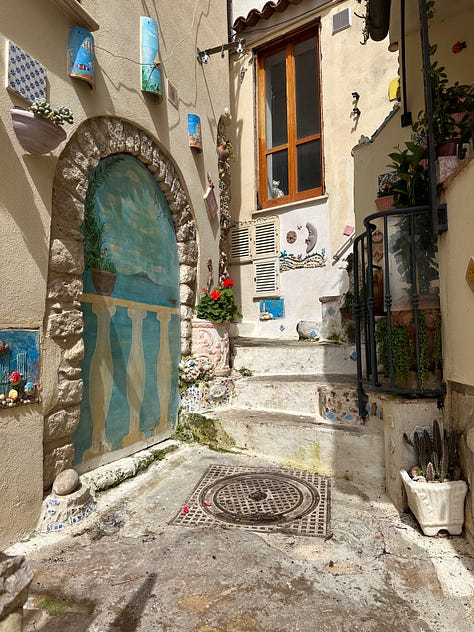
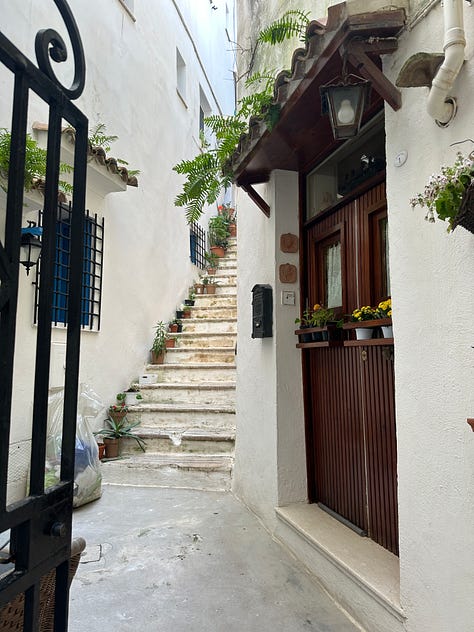
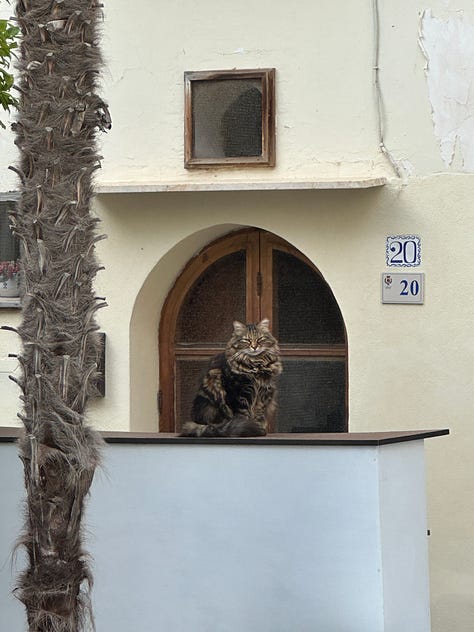
Stay tuned!
A thorough itinerary (where to stay, what to do and where to eat) for Sperlonga is coming soon for paid subscribers!
Safe Travels!
xx Misha







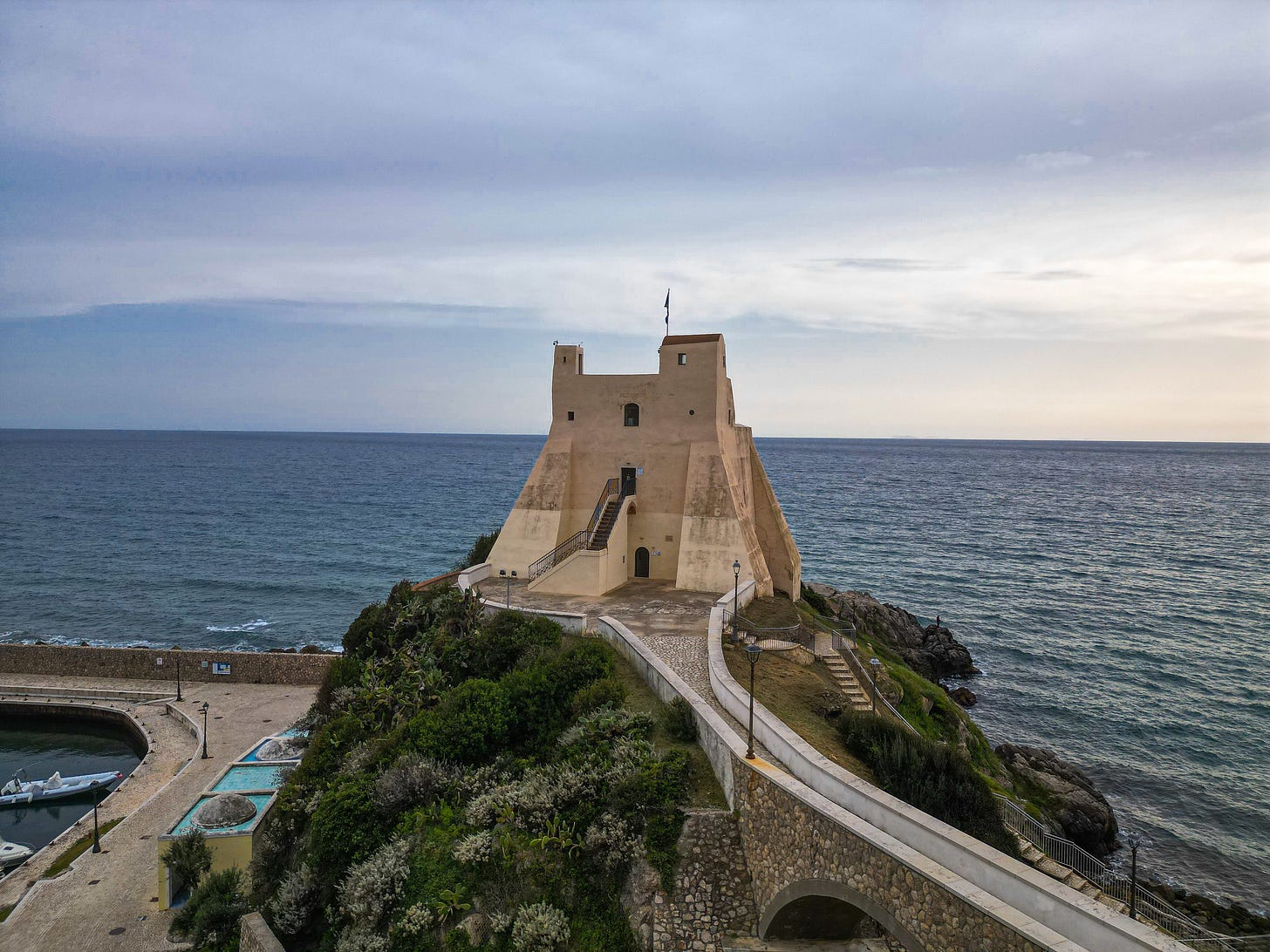
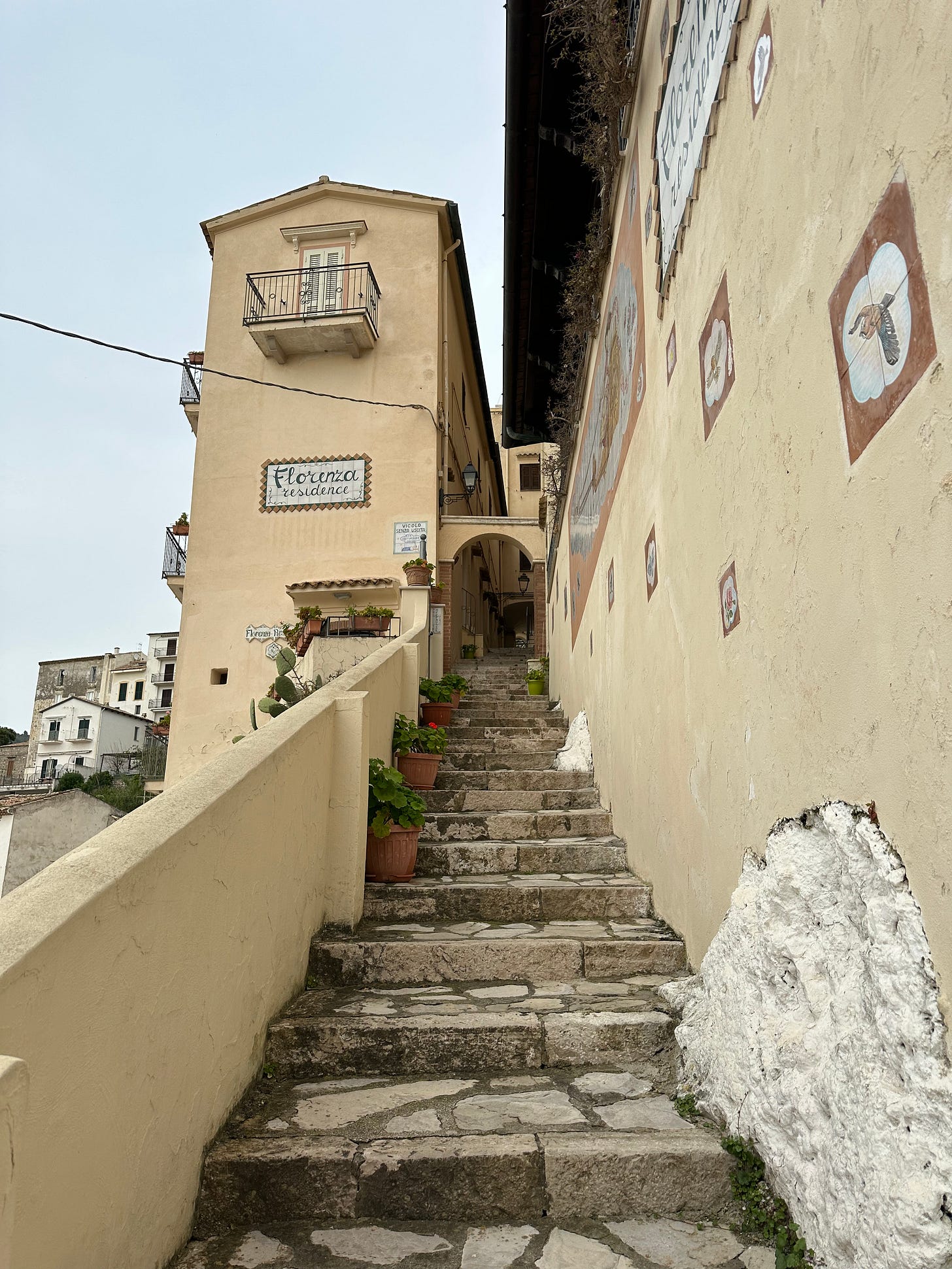
How cool!! These little towns are always so cute and have all the character. Makes me wanna read The Odyssey again lol